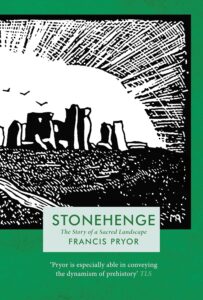
Stonehenge: The Story of a Sacred Landscape
by Francis Pryor
Genres: History, Non-fictionPages: 208
Rating:

Synopsis:A beautifully illustrated account of the history and archaeology of an iconic feature of the English landscape, as part of the stunning Landmark Library series.
Perched on the chalk uplands of Salisbury Plain, the megaliths of Stonehenge offer one of the most recognizable outlines of any ancient structure. Its purpose - place of worship, sacrificial arena, giant calendar - is unknown, but its story is one of the most extraordinary of any of the world's prehistoric monuments.
Constructed in several phases over a period of some 1500 years, beginning c. 3000 BC, Stonehenge's key elements are its 'bluestones', transported from West Wales by unexplained means, and sarsen stones quarried from the nearby Marlborough Downs.
Francis Pryor is one of Britain's most distinguished archaeologists. In Stonehenge, he delivers a rigorous account of the nature and history of the monument, while also placing the enigmatic stones in a wider cultural context, exploring how antiquarians, scholars, writers, artists, 'the heritage industry' - and even neopagans - have interpreted the site over the centuries.
Francis Pryor’s Stonehenge: The Story of a Sacred Landscape is a good summary of the current consensus around Stonehenge, inasfar as I understand it. It’s not really much of a step forward from Mike Parker Pearson’s book on Stonehenge from ~2012, which is probably a good place to go if you want something in-depth.
Still, it’s presented beautifully here, with photos, art, coloured maps and plans, etc, and it does a good job of condensing down what we know and how we know it, and theorising from what we do know about the reasons for Stonehenge’s building, the phases of activity there, the traces of those who built there, etc. It discusses Mike Parker Pearson’s theory that the people who built Stonehenge built in wood for the living and stone for the dead, and makes that pretty clear (though I think there’s supporting evidence he chooses not to discuss that would firm up that point).
However, I do keep in mind with Francis Pryor that he does deliberately cherry-pick sources that agree with him (he’s said as much, explicitly, in Britain AD), so it’s important to read him sceptically.
Rating: 4/5
